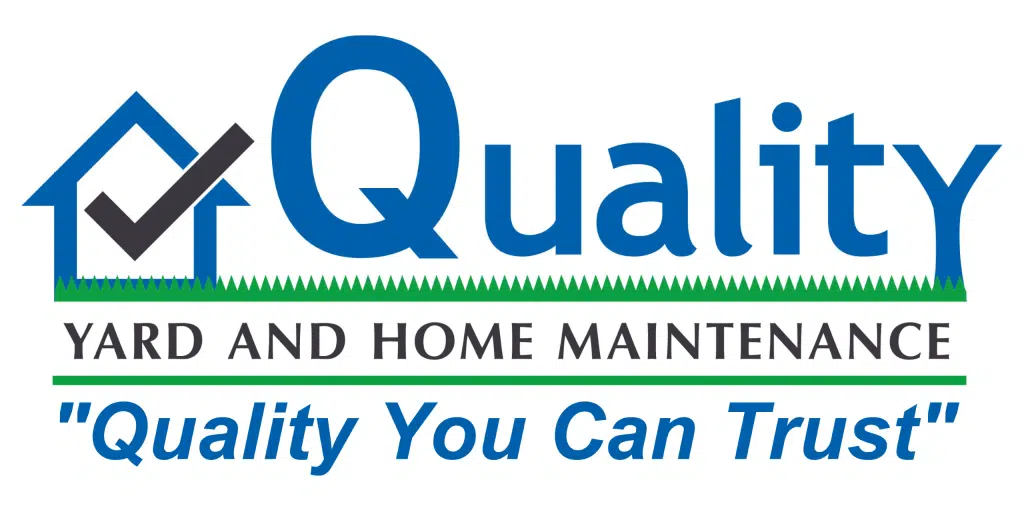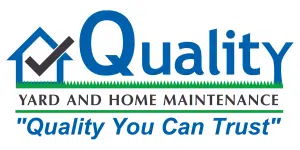PROFESSIONAL LAWN CARE AT AFFORDABLE PRICES
Professional Grub Treatment
Achieving a lush, vibrant lawn is a goal for many homeowners, but it requires more than just watering and mowing. A comprehensive approach involving fertilization, weed control, and pest control is essential for a healthy lawn.
GRUBS are a common issue in Central Ohio.
Contact Quality Yard & Home Maintenance for a detailed analysis of your lawn and receive a no-obligation price quote on a comprehensive approach to building and maintaining a beautiful, healthy lawn for your home.
We treat each lawn as if it were our own.
We won’t let you down if other lawn care companies have. Check out our Testimonials and join our happy customers. Our Quality lawn service brings a Smile to our customers because of the care and family values in which we run our lawn care and landscaping service company.
Professional Expertise in Grub Treatment
Grubs in Your Lawn
Have you ever noticed brown patches ruining the beauty of your lush green lawn? Or a mass convergence of birds onto your lawn? Chances are, you might be dealing with grubs. Grubs are the larval stage of various beetles and can seriously harm your lawn if not managed properly and dealth with quickly. But don’t worry, we’ll guide you through everything you need to know to reclaim your green space!
Grubs are the immature stage of beetles, such as Japanese beetles, June beetles, and European chafers, and are notorious for damaging lawns. These pests feed on grass roots, leading to the appearance of brown, spongy patches in your lawn which can easily be pulled up due to the weakened root system. These patches may expand uniformly as the grubs continue to consume the roots across your lawn. Detecting them early is crucial, and this typically involves seeing if the turf lifts easily or if there are visible grubs underneath. The best management strategies involve a combination of prevention, natural remedies, and potentially chemical treatments to effectively control and eradicate these pests, ensuring the health and beauty of your lawn are restored.
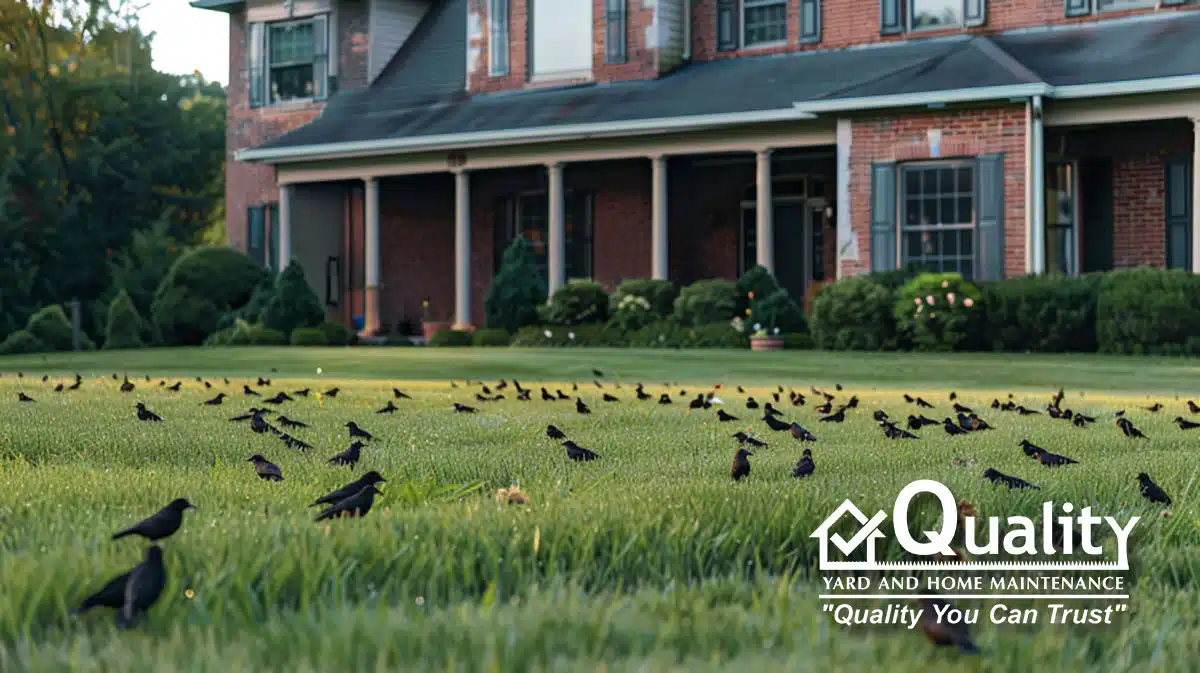
Identifying Grub Infestation
Signs of Grub Damage
- Irregular Brown Patches: These appear on your lawn and fail to recover after watering, indicating root damage beneath the surface. The grass may also appear wilted or discolored despite adequate soil moisture.
- Grass Pulls Up Like Carpet: The dead grass will pull up like carpet in extreme cases.
- Increased Bird Activity: If you notice birds frequently pecking at your lawn, it may be because they are feeding on the grubs just below the surface. This bird activity can further damage the grass and expose more of the root system.
- Spongy Grass: As grubs feed on the roots, the turf may become soft and spongy, and you might be able to roll the grass back like a carpet, revealing the grubs underneath.
Confirming Grub Presence
- Sample Inspection: To confirm an infestation, take a small square-foot section of your lawn, about three inches deep. Peel it back and inspect the soil and root zone.
- Count the Grubs: If you find more than five grubs per square foot, this is considered an active infestation and requires attention. The visual confirmation of grubs is crucial before proceeding with treatment to ensure that you are addressing the correct problem.
These steps help not only in identifying the presence of grubs but also in assessing the extent of the infestation, guiding the appropriate level of intervention needed to protect and restore your lawn.
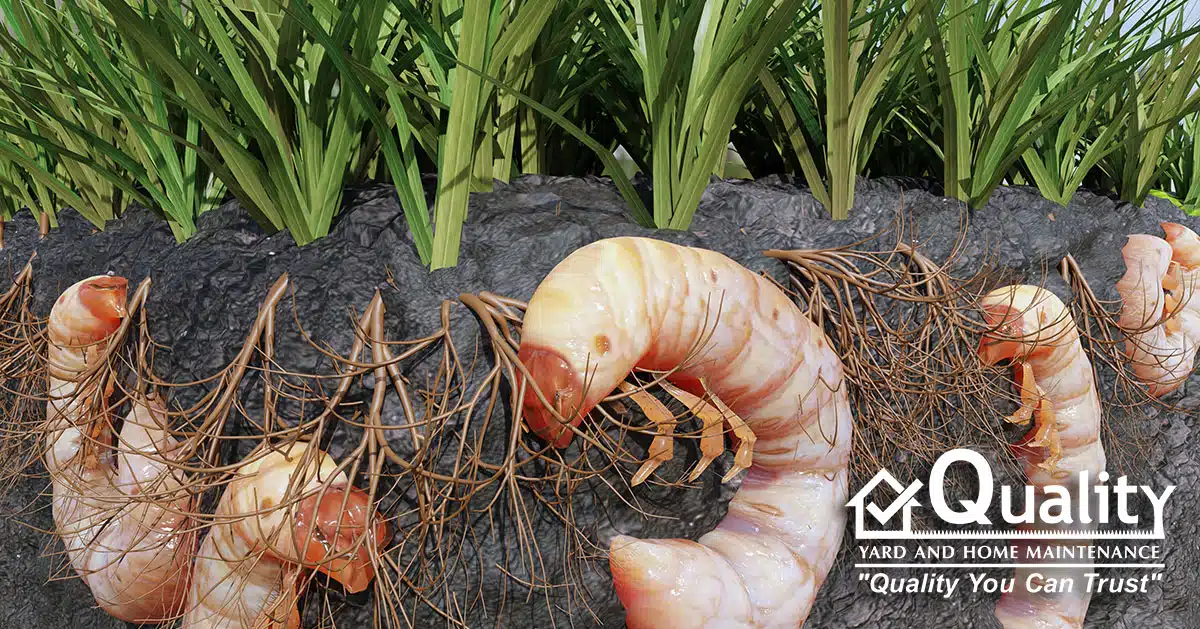
Life Cycle of Grubs
Understanding the life cycle of grubs is crucial for effective pest management and maintaining the health of your lawn. Grubs, which are the larval stage of beetles, particularly those like the Japanese beetle, go through a complex developmental process known as complete metamorphosis, which includes multiple distinct stages: egg, larva, pupa, and adult beetle.
Key Stages of Grubs
Egg Stage
The cycle begins when adult beetles lay eggs in the soil during the summer months. These eggs are usually laid in well-watered and healthy lawns where the soil conditions are ideal for grub development. The eggs hatch into larvae within a few weeks, depending on soil temperature and moisture levels.
Larval Stage
Once hatched, the larvae, commonly referred to as grubs, start feeding on the grass roots immediately. This stage is where they cause the most damage to lawns. The grubs are C-shaped, white or cream-colored, with a distinct brown head, and can vary in size through their development stages. As they grow, they go through several molts or larval stages. This period of growth typically lasts for about a year, during which they are most vulnerable to control methods.
Pupa Stage
As temperatures cool, grubs move deeper into the soil to overwinter. In the spring, they return to the surface and pupate. The pupa stage is a transitional phase during which the grub transforms into an adult beetle. This stage does not involve feeding and usually occurs in the soil or just below the soil surface.
Adult Stage
Adult beetles emerge from the pupae, usually in early summer, and the cycle begins anew. They feed on foliage and mate, completing the cycle of life for these insects. After mating, the females lay eggs, and the process starts over again.
By understanding these stages, homeowners and gardeners can time their interventions, such as applying insecticides or introducing natural predators, to effectively reduce grub populations and minimize lawn damage.
Treatment for Grubs
Natural Remedies
Exploring environmentally friendly methods to control pests is essential for maintaining the health of your garden without relying on harsh chemicals. Here are some effective natural solutions:
Nematodes
Beneficial nematodes are tiny, soil-dwelling organisms that seek out and parasitize grubs. They are particularly effective because they enter the grub’s body and release bacteria that consume the pest from the inside out, leading to its natural demise. Applying nematodes is simple and safe for the environment, and they do not harm plants or beneficial insects.
Neem Oil
Neem oil acts as a powerful biopesticide that disrupts the life cycle of pests at various stages. When applied to the soil or foliage, it prevents grubs from maturing and beetles from reproducing. It’s a safe option that respects the ecological balance and poses little risk to wildlife or non-target species. Neem oil is also effective against a wide range of garden pests, not just grubs.
Milky Spore
Milky spore powder is a natural bacterium (Bacillus popilliae) that specifically targets and kills Japanese beetle grubs in the soil. When applied to your lawn, it creates a long-lasting protective barrier that continues to work for years. The grubs ingest the spores, which multiply inside their bodies and cause them to die. This method is particularly effective as part of an integrated pest management strategy and is harmless to beneficial insects, pets, and humans.
By adopting these natural remedies, you can effectively manage grub populations in your garden, preserving your lawn’s health and beauty in a sustainable manner.
Chemical Treatments for Grubs
When natural remedies are insufficient to manage a severe grub infestation, turning to chemical solutions may be necessary. These methods can provide more immediate and potent results, ensuring that the grub population is effectively controlled before they cause extensive damage to your lawn.
Choosing the Right Product
When selecting a grub control product, it’s crucial to choose products specifically labeled for grub control, as they contain active ingredients that are tailored to target grubs without excessive harm to other garden inhabitants. Two of the most effective active ingredients are imidacloprid and chlorantraniliprole.
Imidacloprid acts as a neurotoxin that disrupts the nervous system of grubs, while chlorantraniliprole works by inhibiting muscle contraction, leading to the pests’ paralysis and death. Products containing these compounds are widely recommended due to their proven efficacy in controlling grub populations at various stages of development.
Imidacloprid
Imidacloprid is a widely used neonicotinoid insecticide known for its effectiveness against a variety of pests, including grubs. One major advantage of imidacloprid is its systemic action; it can be absorbed by plants and transported throughout their tissues, making it highly effective against insects that feed on them, such as grubs. This results in longer-lasting pest control compared to contact insecticides.
However, the use of imidacloprid comes with significant disadvantages. Its broad-spectrum activity can harm non-target insects, particularly pollinators like bees. There are environmental concerns regarding its persistence in soil and potential to contaminate water sources. This has led to regulatory scrutiny and restrictions in some regions.
Chlorantraniliprole
Chlorantraniliprole is another effective option for grub control, known for its targeted action against a wide range of pests while being softer on beneficial insects compared to other insecticides. It works by disrupting muscle contractions in insects, leading to paralysis and death. This specificity is advantageous because it reduces the impact on non-target species.
Chlorantraniliprole’s environmental profile is favorable; it has low toxicity to birds, mammals, and fish, making it a safer choice for use in diverse ecological settings. Moreover, it has been shown to have minimal impact on pollinators, which is a significant advantage over more broadly toxic pesticides.
Despite these benefits, chlorantraniliprole is not without its disadvantages. It tends to be more expensive than other grub control products, which can limit its accessibility for some users. Additionally, as with any pesticide, incorrect application can reduce its efficacy and increase environmental risks. Users must follow application guidelines carefully to ensure effectiveness and safety.
Both imidacloprid and chlorantraniliprole offer powerful tools for controlling grub populations but must be used responsibly to minimize their environmental and ecological impacts. Proper application according to manufacturer instructions and adherence to local regulations are essential for achieving effective control while maintaining safety.
At Quality Yard & Home Maintenance, we have a commitment to safety for our customers and lawns. We handle all products with kid gloves, taking extra care to ensure they are used responsibly and correctly. Our team undergoes extensive training and re-training to ensure we solve your grub problem safely and efficiently.
Application Techniques
The timing of application is critical for maximizing the effectiveness of grub control products. The best time to apply these products are from late spring to early fall. This timing coincides with the grubs being small and close to the surface, which increases their exposure to the products. It is essential to follow the manufacturer’s instructions carefully to ensure safety and effectiveness. This typically involves watering the lawn after application to help the products penetrate the soil and reach the grubs.
By combining the right products with correct application techniques, you can effectively reduce grub populations and protect your lawn from damage. Always ensure to adhere to local regulations and guidelines when using chemical treatments to mitigate any adverse environmental impacts.
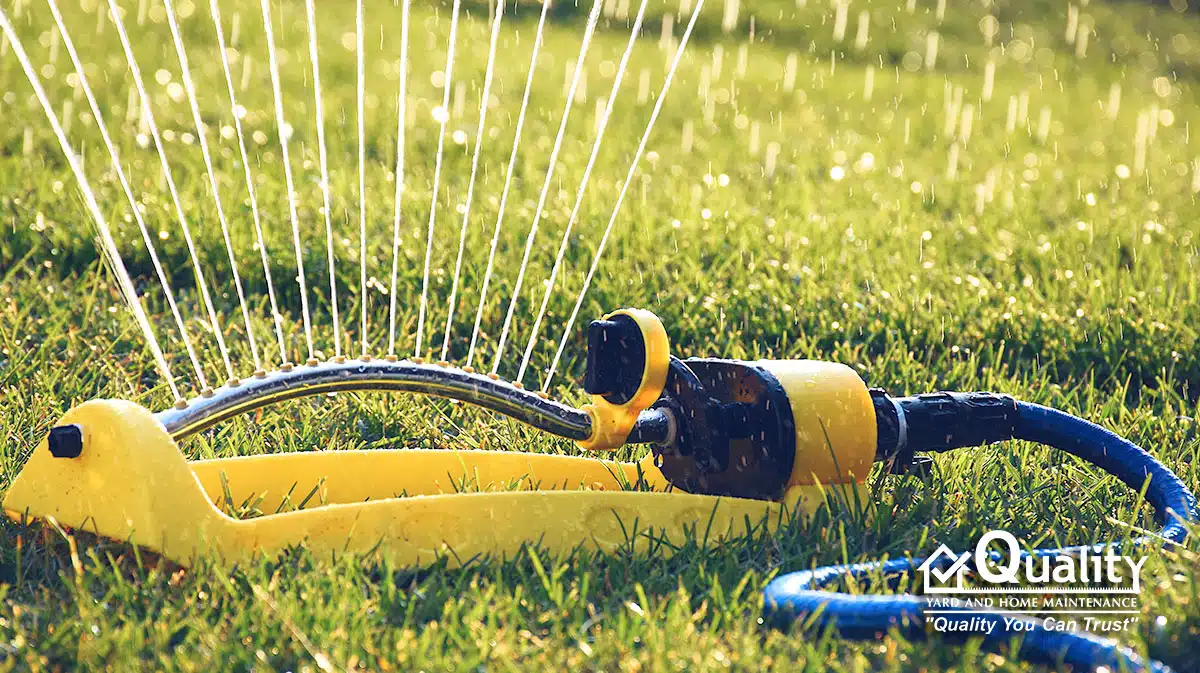
DIY or Hire a Professional for Lawn Grub Treatment?
When it comes to grub control in your lawn, homeowners are faced with the decision between do-it-yourself (DIY) methods and hiring a professional. Each option has its pros and cons, which are important to consider based on your specific needs and circumstances.
DIY Grub Control
Pros:
- Cost-Effectiveness: DIY grub treatment is generally less expensive upfront than hiring a professional. Homeowners can purchase products at local garden stores and apply them at their convenience.
- Flexibility: You can choose when and how to apply the treatment, which is great for those who prefer to manage their lawn care schedule independently.
Cons:
- Effectiveness: Many over-the-counter grub control products may not be as effective as professional-grade options. This can lead to mixed results depending on the severity of the infestation.
- Time and Effort: Applying grub control treatments can be time-consuming and physically demanding. Misapplication can also lead to poor results, requiring additional treatments.
Hiring a Professional for Grub Control
Pros:
- Expertise and Effectiveness: Professionals have access to more potent treatments and are trained to identify the extent of an infestation and apply treatments effectively. This generally leads to better and more reliable results.
- Convenience: Hiring a professional saves time and effort. They handle everything from assessing the lawn to applying the treatments, which is especially beneficial for those with busy schedules.
Cons:
- Cost: Professional services are more expensive than DIY methods. The initial cost may be higher, but it is often justified by the quality of work and the longevity of the results.
- Scheduling: You may have to work around the service provider’s schedule, which might not always align with your preferred timing.
In conclusion, the choice between DIY grub control and hiring a professional depends on factors like budget, time availability, and the severity of the grub problem. While DIY may save money, the expertise and guaranteed results offered by professionals can be a worthwhile investment for maintaining a healthy lawn.
Frequently Asked Questions about Grub Control
Q: How many grub treatments does it take to eradicate grubs from my lawn?
A: Generally, one well-timed application of a suitable product will provide a season-long control, but severe infestations might require a follow-up treatment.
Q: Can grubs return even after treatment?
A: Yes, grubs can return year after year. Preventative measures are necessary to maintain control, as new beetles can lay eggs in the lawn each season. Consistent yearly treatments or adopting integrated pest management strategies can help minimize their return.
Q: What is the best time of the year to apply grub treatments?
A: The best time of year to apply grub treatments is late spring to late summer.
Q: Are there any lawn types that are more susceptible to grub damage?
A: Lawns with a high organic content or those that are consistently moist tend to be more susceptible to grub damage. Grubs thrive in moist soils where they have ample food supply and protective cover.
Q: How long does it take to see results after applying grub control methods?
A: The time it takes to see results after applying grub control methods can vary based on the method used. Immediate-acting products can show effects within 24 hours, whereas preventive treatments take longer to because they work over the season to disrupt the life cycle of new grubs.
Q: What is the best time of year to begin grub treatments in central Ohio?
A: The best time of year to begin grub treatments in Central Ohio is generally from late spring to early summer. Specifically, applying a preventive grub control product between early May and late July is most effective. This timing aligns with the grub life cycle, targeting the young grubs as they hatch and before they cause significant damage to the lawn. Preventive treatments are crucial as they help avoid the peak feeding period of grubs, which typically occurs from August to October.
Choosing the Right Lawn Care Service
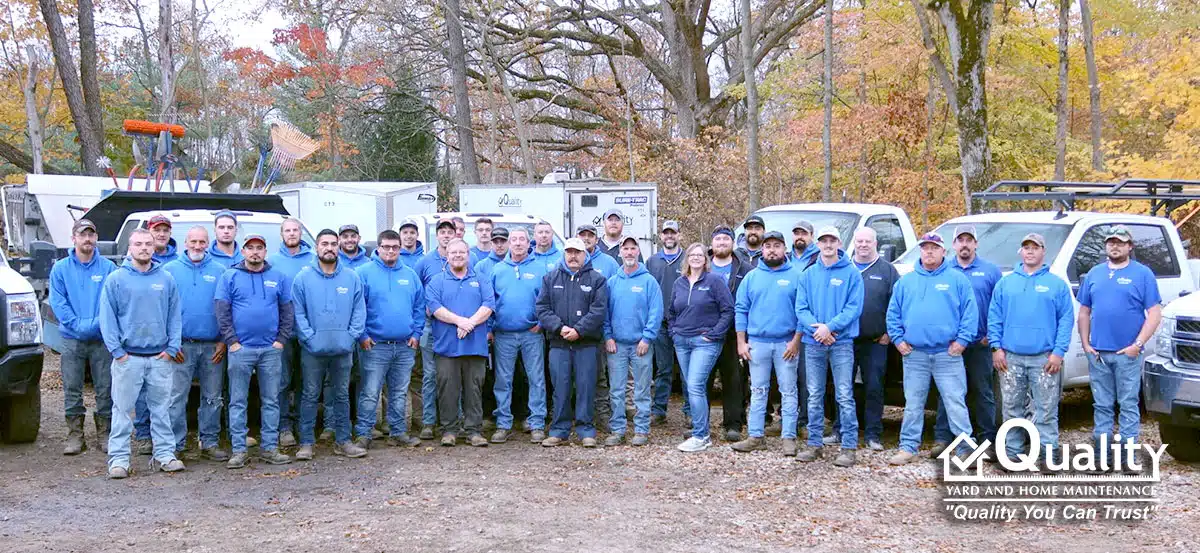
What to Look for in a Service Provider
Choosing the right lawn care service is critical to ensuring the health and beauty of your lawn. When selecting a provider, consider the following key aspects:
- Experience: Look for a company with a proven track record in lawn care. Experienced providers are more likely to understand the unique needs of different lawns and how to address them effectively. We’ve been in business since 2010, and have earned numerous industry certifications to demonstrate our expertise.
- Reputation: Check online reviews, ask for customer testimonials, and talk to neighbors to gauge the reputation of the service provider. A good reputation often indicates reliable and quality service. We have a 4.7 ⭐⭐⭐⭐⭐ Google Rating/147 reviews and 4.9 ⭐⭐⭐⭐⭐ Facebook Rating/90 Reviews. Give us 1% of your trust and we’ll earn the other 99%
- Range of Services: Ensure the company offers a wide range of services that match your lawn care needs. This can include mowing, fertilization, pest control, aeration, and more. A provider that offers comprehensive services can be a convenient choice for all your lawn care needs. Check, check, and check! We offer a complete line of lawn care and landscaping services to keep your home looking beautiful. (And, once you get to know us, you’ll want to take advantage of our other services to help maintain your home).
See below for more details.
Let's Get Started Making a Beautiful Lawn!
Schedule a Visit
Start by requesting a visit from one of our certified lawn care professionals. Use the convenient Request a Quote button here on the website or call (614) 559-0078
We Assess Your Lawn
Our lawn care service begins with a thorough assessment of your lawn to identify its specific needs - determine soil type, grass species, prevalent weeds, and existing lawn conditions.
Get Your Custom Plan
Our Lawn Care Pro will develop a plan for your lawn and email it to you. Call us or email us back and we'll get started on making your lawn look beautiful and healthy once more!
Customer Testimonials



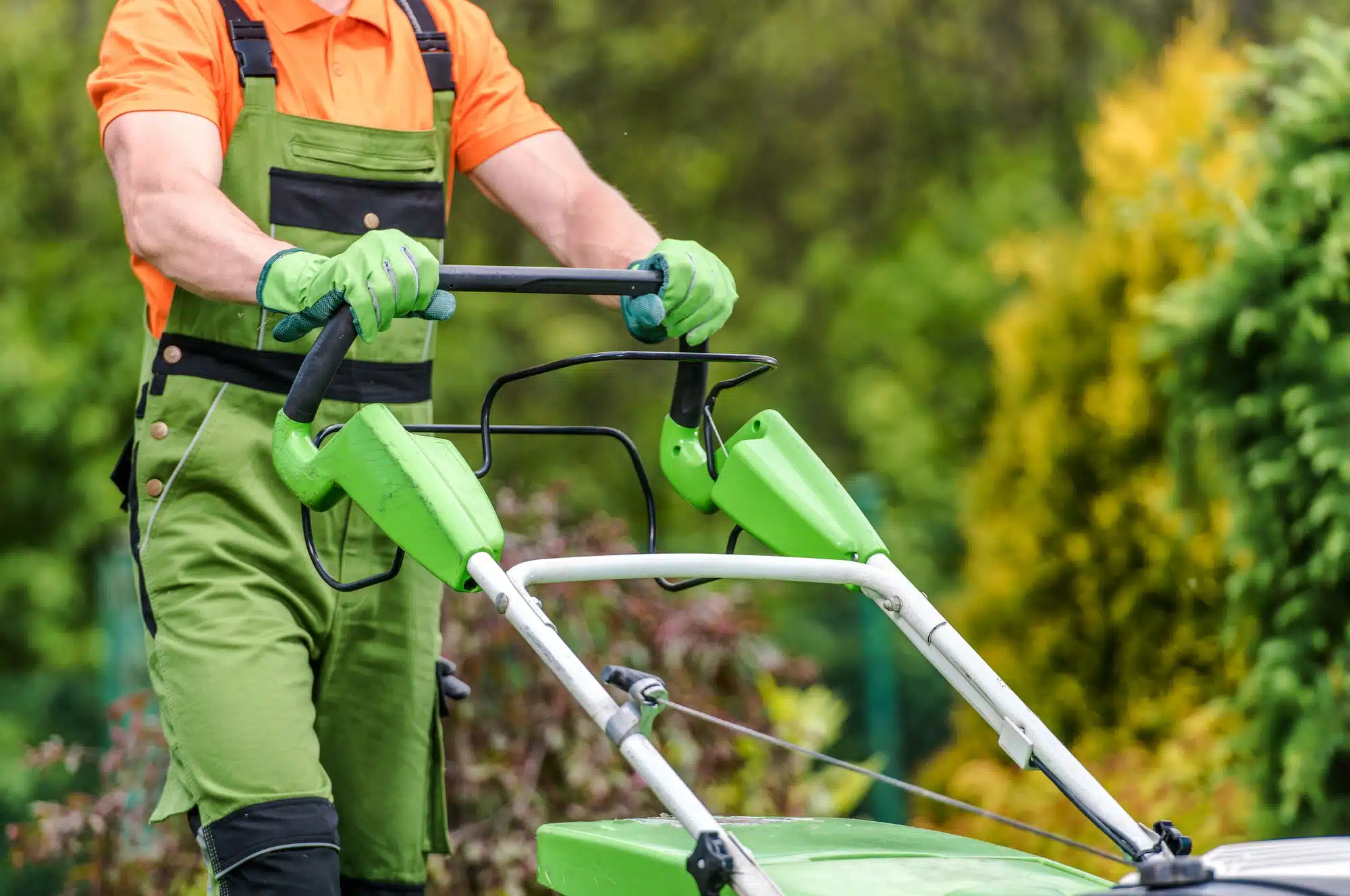
Hire Us
Hire Our World-Class Lawn Care Team
- Request a Quote
- We’ll Assess Your Lawn
- You’ll Receive a Custom Lawn Care Plan



